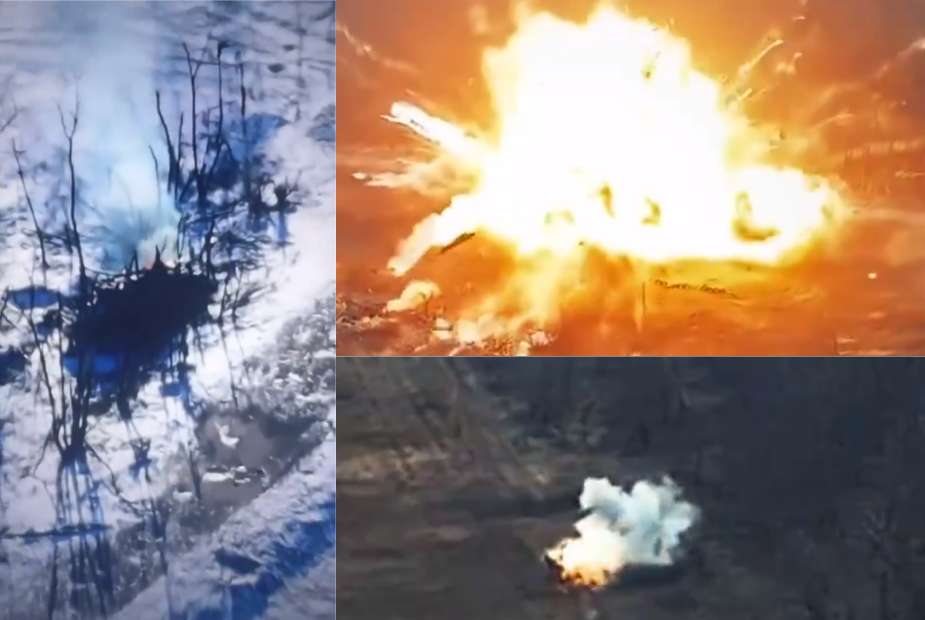- Army
- Conflicts in the world
- Israel - Iran conflict 2025
- Pakistan - India Conflict 2025
- Russia Ukraine War 2022
- Libya conflict day by day
- HAMAS - Israel War 2023
- Operation Serval in Mali French Army
- Sangaris operation Central African Republic
- Sangaris opération militaire République Centreafrique
- Ukraine - Russia conflict
- Syria conflict news
- Defence & Security Industry Technology
- Armies in the world
- Analysis Defense and Security Industry
- Conflicts in the world
- Navy
- Air
Ukrainian forces increase use of FPV drones to destroy Russian tanks
The UK Ministry of Defence has released an intelligence update revealing the impactful use of First Person View Uncrewed Aerial Vehicles (FPV-UAVs) by Ukrainian forces. Operating on the east bank of the Dnipro River, these drones have been a key element in targeting Russian forces, marking a new phase in drone warfare. According to one Russian blogger, almost 90 percent of Russian vehicles in the Krynky sector have been destroyed.
Follow Army Recognition on Google News at this link

Several Russian vehicles in the Krynky sector were destroyed by Ukrainian forces (Picture source: Social Media and Ukrainian MoD)
The success of the Ukrainian forces in using these drones is partly attributed to Russia's apparent weakness in countering such technology. The update from the UK Defence Intelligence suggests that Russia's inability to counter these FPV-UAVs is probably due to a lack of Russian Electronic Warfare capabilities in the area. This gap has given the Ukrainian forces a crucial advantage, allowing them to conduct precise and effective strikes against Russian military assets.
The FPV-UAVs, equipped with munitions, are being used in a coordinated effort with artillery to target and neutralize Russian military vehicles. According to estimates from a Russian military blogger, these efforts have led to a staggering destruction of 90 percent of Russian military equipment in the Krynky sector. This figure underscores the significant impact of the Ukrainian strategy and the effectiveness of FPV-UAVs in modern warfare if it still needs to be proven.
The situation of the Russian forces near Krynky, on the left bank of the Dnipro in Southern Ukraine, is increasingly precarious. About 90% of Russian military vehicles deployed in this area are suffering losses, highlighting a largely unfavorable combat dynamic.
This dire situation for the Russians is mainly due to the tactical and technological superiority of the Ukrainian forces. The effective use of explosive-laden FPV-UAVs, combined with local air control, has allowed the Ukrainians to dominate in the clashes. Their ability to jam the communications of Russian drones while preserving their links has been a key factor in this supremacy.
The Ukrainian Marines of the 35th Brigade have played a crucial role in this success. Despite the losses incurred, they have inflicted considerable damage on Russian forces, including the 810th Marine Brigade, the 104th Air Assault Division, and various army regiments. The Ukrainian advantage in drone reconnaissance has enabled them to effectively target enemy positions with artillery, leading to massive destruction of Russian military equipment.
Although Ukraine has suffered losses, particularly in terms of boats, their ability to maintain supply lines despite Russian attempts to cut them off by air and sea demonstrates their resilience and tactical ingenuity. The Ukrainian foothold on the other side of the Dnipro appears to be solid.
Despite the significant losses suffered by Russian forces in the Krynky sector and elsewhere, there have been many reports of Russia ramping up its production of military vehicles in an attempt to replenish its depleted ranks. This increase in production is seen as a direct response to the heavy casualties inflicted by Ukrainian FPV-UAVs and artillery.
However, analysts remain skeptical about whether this boost in manufacturing will be sufficient to compensate for the extensive losses. As the Ukrainian forces demonstrate their ability to effectively utilize advanced warfare technologies, the question remains if the sheer number of new Russian vehicles can effectively turn the tide in their favor.
As the conflict continues, the effectiveness of such technologies and tactics will undoubtedly shape the course of military actions in Ukraine. The use of FPV-UAVs is a clear example of how unmanned systems are becoming increasingly significant in modern warfare, offering new possibilities and challenges in conflict scenarios.


























